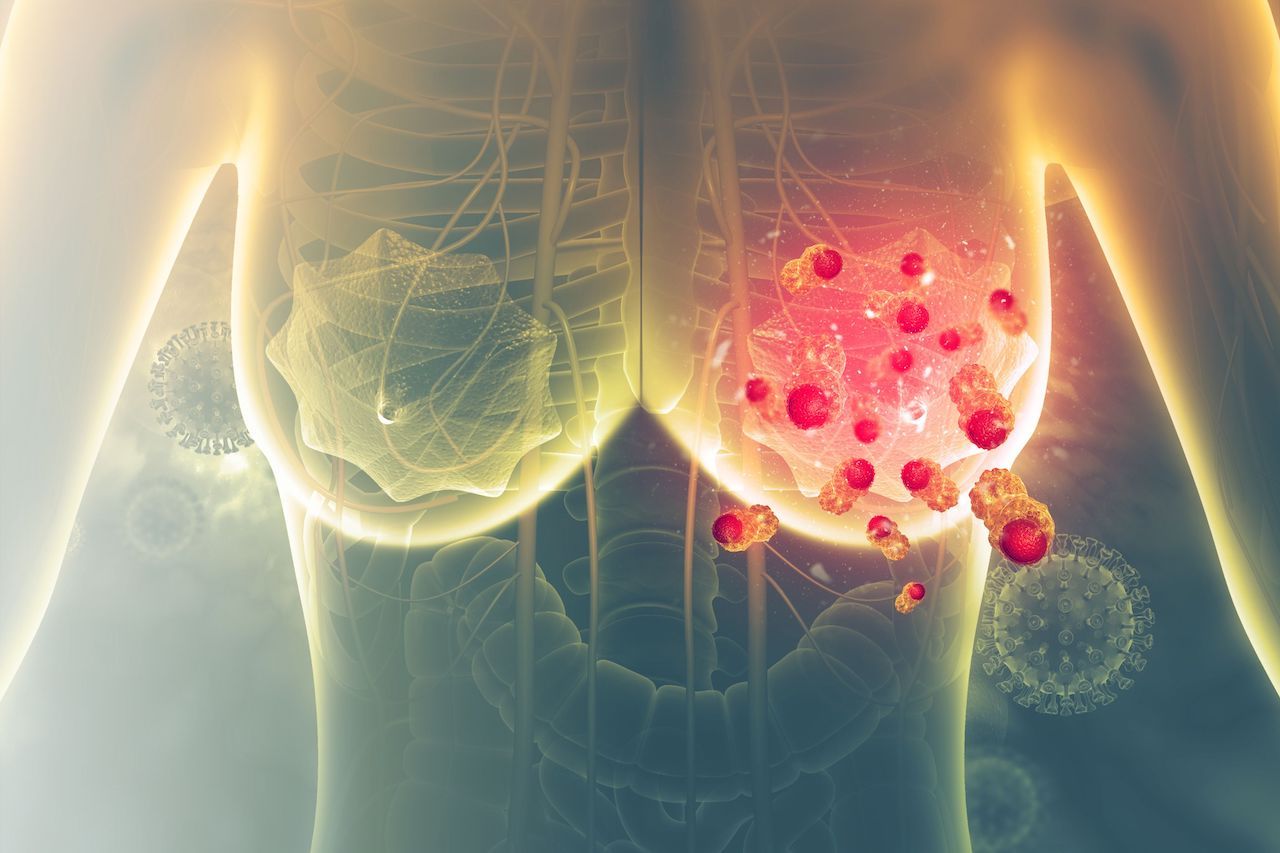Article
Is Targeted Treatment in the Future for Triple-Negative Breast Cancer?
Author(s):
The 5-year survival rate for triple-negative breast cancer (TNBC) is about 77%. The recurrence rate is highest in the first 3 years after treatment, but falls off at the 5-year mark—although the survival rate at this time point tends to be lower. Because TNBC cells lack the hormone receptors for estrogen and progesterone and do not overexpress the human epidermal growth factor receptor 2 gene, treatment often involves chemotherapy, radiation, and surgery. Targeted treatments are not used with TNBC.
The journal Oncogene recently published results on an investigation into the drivers behind triple-negative breast cancer (TNBC). Because the disease has such high recurrence and low survival rates, investigators from Manchester, Glasgow, and Sheffield universities sought to better understand what triggers, and arrests, the growth of this subtype of breast cancer. Their results point to possible new inroads in treating TNBC with targeted therapy in the future.
The 5-year survival rate for TNBC is about 77%.1 The recurrence rate is highest in the first 3 years after treatment, but falls off at the 5-year mark1—although the survival rate at this time point remains lower.2 Because TNBC cells lack the hormone receptors for estrogen and progesterone and do not overexpress the human epidermal growth factor receptor 2 gene, treatment often involves chemotherapy, radiation, and surgery.2 Targeted treatments are not used with TNBC, at least not yet.
The present study investigated the effects of the transcriptional co-regulator CBFβ, which the authors knew “facilitates the function of all 3 RUNX transcriptional factors.” Patients with TNBC who express the RUNX transcription factors tend to have a poorer prognosis. In particular, when RUNX2 and CBFβ are both expressed, TNBC cells have a greater tendency to be metastatic.3
“Mutations in CBFβ are amongst the most frequently reported for breast cancer patients,” the authors noted. “Since CBFβ forms functional complexes with all RUNX transcription factors, it is essential to establish its role in breast cancer metastasis.”
They used MDA-MB-231 cells for their model experiments, adding and removing CBFβ to show its ability to power, perhaps influence, the metastatic process. Their results provide a greater understanding of CBFβ’s role in the transition of TNBC cells between the epithelial and mesenchymal phenotypes, which influence disease progression.3
“Triple-negative breast cancer is a particularly devastating disease which doctors, scientists and patients are investing much time and effort into finding new and better treatments,” stated Paul Shore, BSc, PhD, University of Manchester, lead study researcher. “So this discovery is an important milestone in the understanding of how metastatic cancer spreads—though clearly, there’s a long way to go before it has a chance of being translated into effective therapies.”
Here are some of their important findings3:
- Loss of CBFβ in MDA-MB-231 cells led to cell differentiation of a more epithelial-like phenotype. Epithelial cells help to protect the body from the external environment, as well as serve filtration, absorption, excretion, and sensations duties.
- Introducing CBFβ spurred expression of mesenchymal markers in MDA-MB-231 cells and drove down epithelial markers. Previous study results show that this is associated with an increase in metastatic potential.
- CBFβ, RUNX1, and RUNX2 help to maintain the mesenchymal phenotype in MDA-MB-231 cells.
- MDA-MB-231 cells lose some of their ability to metastasize to bone when CBFβ is removed.
- Mesenchymal cell to epithelial cell transition can be undone by reintroducing CBFβ.
“Our findings that CBFβ is essential to maintain the mesenchymal phenotype, and that it contributes to the formation of bone metastases, suggests that in principle inhibiting this complex might maintain metastatic colonies in a less aggressive epithelial state by driving MET. Thus, targeting the RUNX/CBFβ complex in this way might be a viable option to treat a sub-group of triple-negative breast cancer patients,” the authors concluded.
References
1. Recurrence rate for triple-negative breast cancer. Healthline website. healthline.com/health/triple-negative-breast-cancer-recurrence#outlook. Accessed February 14, 2020.
2. Triple negative breast cancer outlook: survival rates. Healthline website. healthline.com/health/triple-negative-breast-cancer-outlook-survival-rates-stage. Accessed February 14, 2020.
3. Ran R, Harrison H, Ariffin NS, et al. A role for CBFβ in maintaining the metastatic phenotype of breast cancer cells [published online January 31, 2020]. Oncogene. doi: 10.1038/s413888-020-1170-2.














